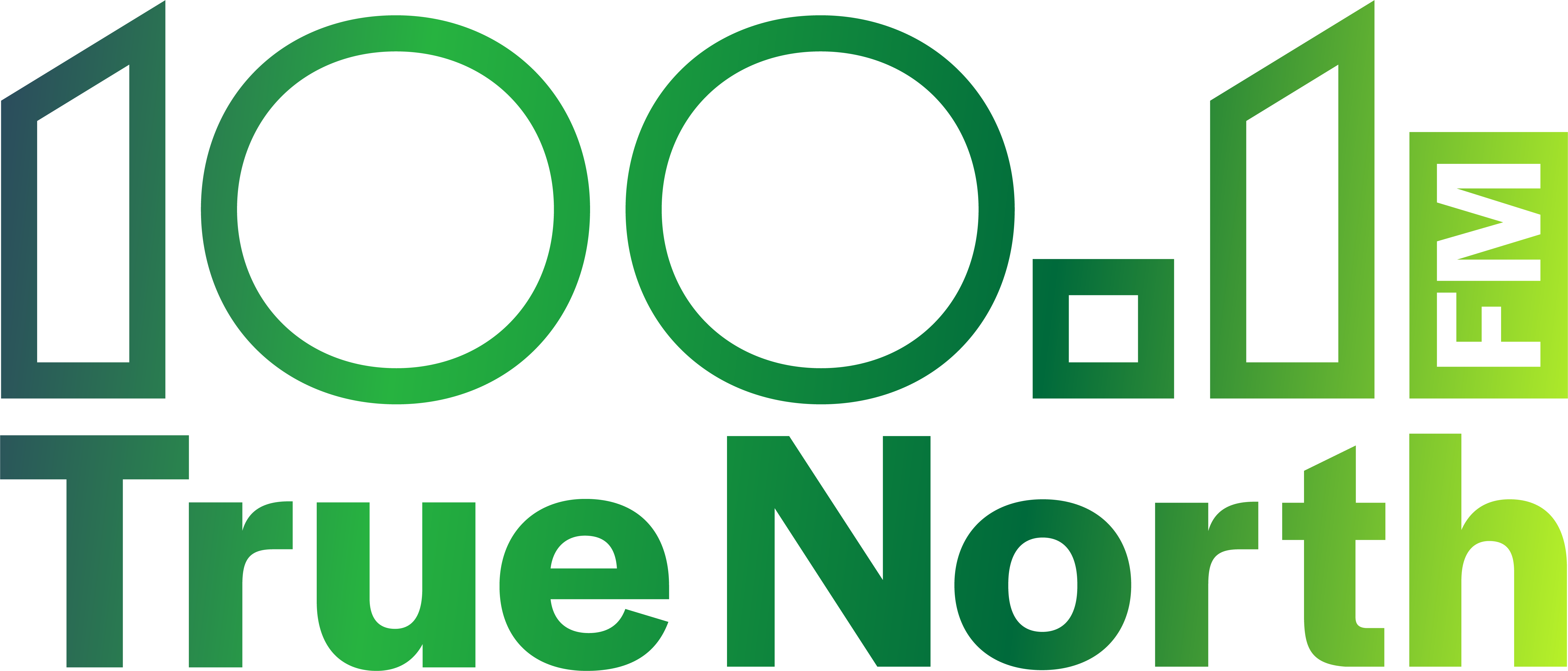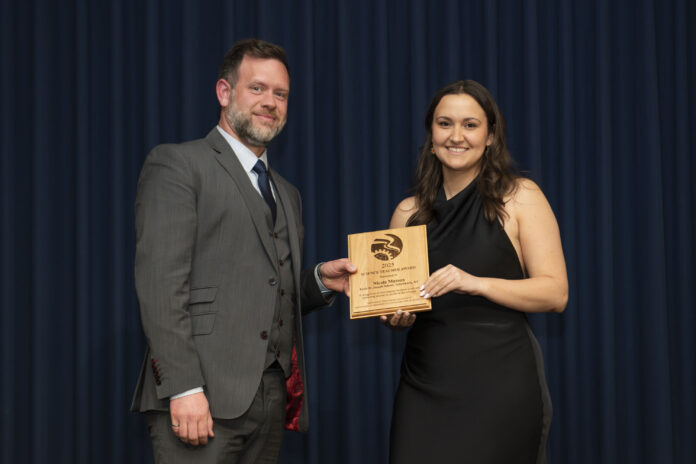Nicole Matous, a teacher from École St. Joseph School was honoured last night alongside many of her peers in the field of science.
The teacher from Yellowknife is combining her love for science with helping youth see that science is “not about memorizing, a bunch of facts” or “answering tests.”
An education foundation from the N.W.T. and Nunavut Association of Professional Engineers and Geoscientists held the awards ceremony to celebrate the leadership and innovation of scientists like Matous, shaping the future of the North.
The symposium brought together professionals and researchers from a range of scientific disciplines to explore ways of strengthening Northern communities.
Over 100 participants attended the awards ceremony on May 14.
Being motivated to keep teaching comes naturally to Matous, who spoke about having a passion for engaging youth with science.
“I just like seeing the moments where they took something really tricky and then they finally got it, that’s a really rewarding experience. So just that and having fun, I think it’s a chance where you can be super weird and fun every day as a teacher and then also it’s a job where you can be quite creative. So every year you get to create a whole new plan and it uses your creative muscles a lot,” said Matous.
Science is not about memorizing facts or answering questions on a test, explained Matous.
“I’m particularly passionate about hands-on science because I think traditionally a lot of students look at many subjects and think science is memorizing, a bunch of facts, answering tests and it’s just a test of knowledge.
Matous emphasized that science is about much more than that.
“So people who do science conduct experiments, build things, retry, and I think it’s just those soft skills that it helps them develop. I think having an understanding of the scientific process will help them understand a lot of things that are also published in the media. They can look at it through a critical lens. They can wonder, how is the experiment done? Was it ethical? Was it credible? So I think a combination of those things,” said Matous.
It is that kind of thinking that Matous uses to help inform the development of the science program and the school’s science lab at École St. Joseph School.
Making science learning ‘hands-on’ is one way to keep students engaged said Matous.
“Because when they can build something and then test its design, or when they can actually run an experiment themselves, that’s always really exciting for them. Giving them some agency and some choice. So, students love, when they can kind of get involved in it,” explained Matous.
Making broader connections to community is another important way to include students and encourage them to use scientific processes.
“Connecting it to the community, I think is super important. Something I would like to do in the future is do some sort of experiment within the community, like testing rain water over the year for different chemicals or testing the amounts of snow in different areas. So, connecting it to things that matter to them. So then they can go home to their friends and family and be like, look what I discovered and then also connecting it to current events because I think anybody, or especially kids, like, feeling smart and they know they’re an expert on something and they can tell people what they’ve learnt,” said Matous.
Matous found creative ways to bring science activities into part of something the school calls “Options periods.”
“When I got hired I was just a regular kind of teacher, I taught all the subjects, but science is my background. So I was like, I want to sneak in science wherever I can. So for that Options block for like a whole year I did Wacky Science, which is basically just fun experiments where it kind of takes a lot of learning all that knowledge that kids can really put their hands on. So some things we would do is make slime and goop and things which kids loved and we also extracted DNA from strawberries as one experiment which the kids thought was really cool because you got to physically see the DNA,” explained Matous.
“Kids got to use the microscopes, which we normally don’t do until like, grade eight or nine. So a lot of the students were super stoked on that,” added Matous.
Matous’ passion for teaching youth about science echoes in her words and enthusiastic expression as she speaks.
Matous encourages her students to explore science together with the every day things they like to do, like making art. With something called “Nature Art” Matous and her students explore and collect natural elements of the environment and create things like paintings and garlands, to create what she says can be both art and science.
A love of helping people learn has always been part of her life, said Matous, who since high school and university, has taken part in mentorship groups and science outreach programs.
“So I always had that in the back of my mind that I like to help people learn. And then I did a little teaching English stint in Spain, where I taught English to students. I kind of fell in love with it, and then I applied to the teacher’s program. So it was kind of combining my love for science with helping people to learn and do things,” explained Matous.






